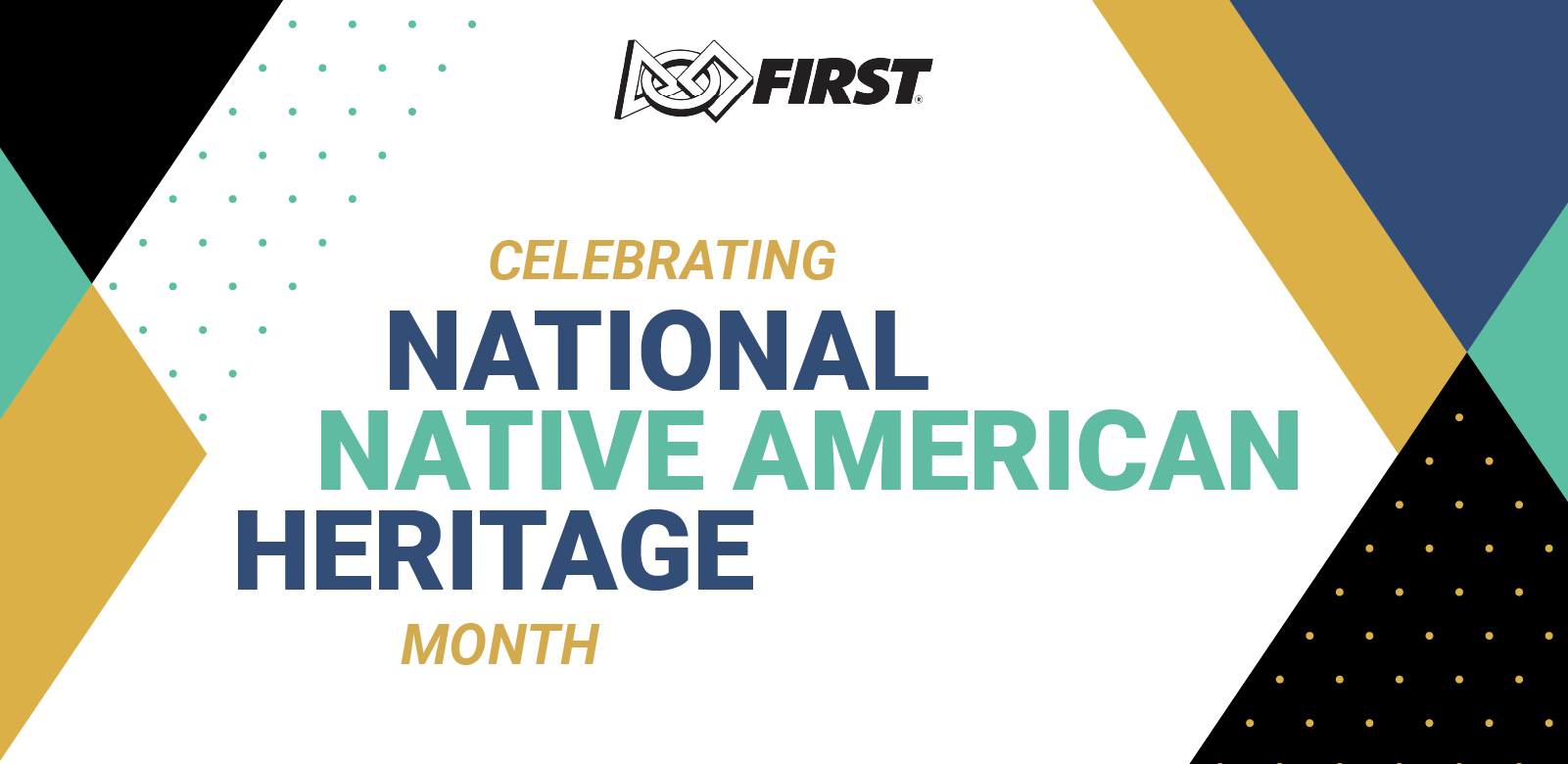
During National Native American Heritage Month, we continue our focus and commitment to expanding awareness, the importance of, and access to science, technology, engineering, and math (STEM) and robotics programs. While FIRST® is in more than 100 countries, it is not yet in every community – and a better future for the world relies on unique perspectives and problem-solvers from all backgrounds and experience.
With FIRST mentors like Sachin Shah, youth are not only being taught the possibilities of innovation and STEM, but are inspired to use STEM to innovate new possibilities for themselves, their communities, and a better future, together. We spoke with Shah, mentor for FIRST® Tech Challenge team, the Chemawa Brave Bots, and science teacher at the Chemawa Indian School, a Native American boarding school in Salem, Oregon.
Q: When did you first get introduced to STEM? How did you originally get involved?
SHAH: As a high school science teacher at a Bureau of Indian Education school, I have always viewed that the sciences do not stand alone and that mathematics, technology, and engineering is always coupled with the sciences. There is a sense of interdependence between these subject areas. When I was a special education teacher in other school districts, I would always volunteer to teach the modified math and sciences and involve engineering, technology, and mathematics. When I taught geometry, I would have students build the toothpick bridges and reinforce the concepts of different triangles by explaining why some triangles would work and other triangles would not on a bridge. The students would then build and test the bridges to see how sturdy their bridges are in regards to the geometric concepts that were taught in the class.
Q: Tell us about your role as a FIRST Mentor.
SHAH: My role as a mentor is to be a guide and a facilitator that would allow for the students and participants to become experimenters and allow them to make the needed mistakes to learn what works and what does not work – be it building the robot, preparing the engineering notebook, or fundraising. I help the students to think and learn through trial and error, and help the students think for themselves. Mentoring is not a hands-off process but requires my involvement even more to help get the students to think outside of the box.
Q: Tell us about what kind of additional STEM/coding opportunities you provide for your students.
SHAH: When the students are programming the robot, we use a lot of the programming techniques and even some coding. After the competition season is over- students are involved with codedrones in which students build the drones and the remote control, and then program the codedrone remote with coding, allowing the students to then experiment with their own drones. Just because the competition season is over, does not mean we are done exploring and learning with STEM.
Q: How are you inspiring Indigenous students to explore STEM and robotics?
SHAH: By first telling the student that engineering, science, mathematics, and technology has always been created by innovation be it in agriculture, fishing, transportation by handmade watercrafts, housing be it teepees and wigwams, and etc. I show them to be engaged in robotics, they are carrying out the spirit of innovation that their ancestors have always had.
Q: What can the FIRST community do better to support the inclusion of Indigenous youth and mentors in FIRST programs
SHAH:
- Have more discussions with the Bureau of Indian Education, US Department of Education (Office of Indian Education) to see how robotics can be implemented in the curriculum or afterschool activities.
- FIRST should collaborate with American Indian Science and Engineering Society (AISES) at the high school and university/college levels to increase STEM participation of the Native and Indigenous cultures.
- Since FIRST is also on the international scene, continue expanding opportunities to communities, including the indigenous people of Australia, the FIRST Nations of Canada, the Māori of New Zealand, people across the African continent, and countries where women do not have equal access to enriched educational opportunities such as India and other countries.
Read about FIRST’s continued commitment to expanding a STEM community for all in the FY2021 Equity, Diversity & Inclusion Impact Report.
If you have an inspiring story or piece of wisdom that you have gained through your experiences in the FIRST community, please reach out to us at inspire@firstinspires.org and inquire about becoming a guest contributor for Inspire.
